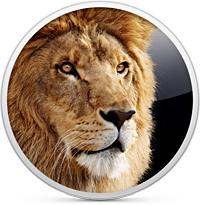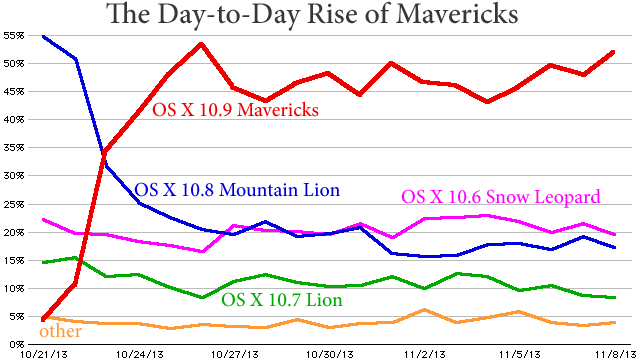OS X 10.6 Snow Leopard is widely regarded as one of the best versions of Mac OS X ever released, but its successor, OS X 10.7 Lion, is often pushed aside. Let’s look at why.
 In August 2009, Apple released the Mac’s first Intel-only operating system, Snow Leopard, dropping support for PowerPC Macs. It was also the first time Apple lowered its pricing scheme for OS X, a trend they continue to keep. Many people deemed this price drop was because Snow Leopard was merely an Intel-only version of OS X 10.5 Leopard, stripping out the PowerPC code.
In August 2009, Apple released the Mac’s first Intel-only operating system, Snow Leopard, dropping support for PowerPC Macs. It was also the first time Apple lowered its pricing scheme for OS X, a trend they continue to keep. Many people deemed this price drop was because Snow Leopard was merely an Intel-only version of OS X 10.5 Leopard, stripping out the PowerPC code.
Whatever the reason for the new pricing, Snow Leopard was a massive success. It was slick, fast, and streamlined. It took full advantage of the Intel infrastructure and ran amazingly well on all Intel Macs – the only exception being the Core Solo Mac mini from Early 2006.
My wife has a first gen Intel iMac. It’s a 1.83 GHz Core Duo model with only 1 GB of RAM, and it screams along, even in 2013. I am so surprised with its speed. It replaced her i5 Windows 7 laptop, and this Early 2006 iMac puts it to shame. Running Snow Leopard, this iMac is incredibly fast.
In 2012, I bought a 2 GHz white Early 2009 MacBook. It came with 2 GB of RAM and Leopard. I immediately upgraded it to Snow Leopard; that was a huge improvement.
 Lion
Lion
A week later, I purchased Lion, a snip at only £24.99. I installed it on my MacBook and instantly there was a noticeable difference – and not a good one. While Snow Leopard was an Intel overhaul of Leopard, Lion brought with it a whole host of new features including LaunchPad, Mission Control, auto saving, and the integration of iCloud. These new features and the refined look also brought poor performance and an OS that I found to be a disappointment.
Upgrading to 4 GB of RAM improved performance slightly, but it was still sluggish, and its stability was a major let down. Subsequent point updates did nothing to improve speed, and a number of more cautious people – those who wait hear if it is wise to upgrade – held off as the reports of poor performance flooded in, some never installing it, sticking with Snow Leopard. [Publisher’s note: That’s what we did at Low End Mad headquarters, waiting for OS X 10.9 Mavericks before installing any post-Snow Leopard version of OS X.]
Lion is often to referred to as “the Vista of the Mac world” due to its similarities of poor performance on compatible hardware. It is one of the few versions of OS X to run poorly on the minimum specifications. Actually, it runs poorly on most hardware.
Don’t get me wrong; it is not a terrible OS. I ran it from February 2012 until OS X 10.8 Mountain Lion was released in July 2012. However, like Vista, it just performed poorly. The inclusion of iCloud integration is probably the main reason why most people upgraded, despite not really wanting to. (For more on Vista, see The Future of Windows Vista by Dan Knight and Windows Vista: Does It Deserve Its Bad Reputation by Simon Royal.)
Mountain Lion
Lion was perhaps a beta for future versions; it was test version of Mountain Lion. When Apple released Mountain Lion, it was fast, slick, and stable, sporting the same look and feel as Lion but with a few more iCloud and iOS integrated elements. Once again it was likened to Windows, as Windows 7 sported a similar look to Vista but brought with it majorly increased speed and stability with a few new features too.
When Mountain Lion was released in 2012, it was widely accepted, and I personally think it is what Lion should have been. If Snow Leopard was an optimised Leopard, and Windows 7 was an optimised Vista, then Mountain Lion certainly was an optimised Lion.
Lion Today
Apple released Mavericks in October 2013. It runs on all hardware that supports Mountain Lion and, if your Mac is Mavericks capable but you are still running Snow Leopard, Lion (or Mountain Lion for that matter) then it is a free upgrade, a great way of getting people dragging their heals to install the latest – and it worked.
When Mavericks was released, Lion only held a 14.4% user base amongst Low End Mac visitors on Intel Macs. This dropped to 10.9% within a week, and it has dropped to 8.2% as those holding off updating while listening for horror stories have made the move to Mavericks.
The only reason to stay on Lion is if your Core 2 Duo Mac is one of those with too low a graphics chip to support Mountain Lion and Mavericks, such as Late 2006 iMacs, Mid 2007 Mac mini, the first two Mac Pros, the Late 2006 to Late 2008 MacBook, the original MacBook Air, 15” and 17” 2006 Core 2 Duo MacBook Pro.
So I am sure Lion will not disappear altogether just yet, but it is still one of the lowest used versions of OS X, ahead of only OS X 10.4 Tiger and 10.5 Leopard at 3.8% between them.
Mountain Lion held 54.6% before the release of Mavericks, and it dropped to 19.0% a week after the 10.9 release and is now at 17.1%. Interestingly, Snow Leopard only dropped from 22.2% to 19.9% that first week and is now holding at 19.5%. Many of those “stragglers” probably own legacy hardware such as Core Duo Macs that do not support anything higher (like my wife) or are using older PowerPC-only software that will not run in Lion or anything higher.
Good-Bye Lion
My recommendation is to skip Lion if possible. Either stick with Snow Leopard or upgrade to Mavericks if you can.
Follow Simon Royal on Twitter or send him an Email.
Like what you have read? Send Simon a donation via Tip Jar.
keywords: #osxlion #vista #lion #techspectrum #simonroyal
short link: http://goo.gl/DYBvxi
searchword: endoflion


